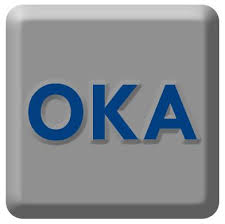Conflict explodes
- Police answer a 911 call.
- A white policeman kills an unarmed black man who is already subdued and handcuffed.
- The video capturing the event catches fire on the internet, and media outlets take sides, inflaming an already volatile situation.
- Communities around the nation take to the streets to protest the latest in a long line of race-related injustices at the hands of law enforcement.
- Many national and local leaders push to answer protests with militaristic—command and control—force.
- Many police officers feel under siege and struggle to do a dangerous job under increasing public criticism and scrutiny.
- Large swaths of disenfranchised citizens struggle to express their fear and frustration—long-time pillars of their cultural experience.
- What will happen next?
Escalation is a choice
Every moment offers us a choice to re-evaluate, to re-consider, to choose this path or that. To ratchet up the tension and sharpen the threat—these are choices. So, therefore, can be the option of de-escalation. While Emotional Intelligence and the EQ-i are most known for their application to leadership and team development, EQ provides a sharp and powerful de-escalation toolkit.
What does de-escalation look and sound like?
With tensions at a fever pitch, Sheriff Chris Swanson (Genesee County, Michigan) removed his helmet, put down his baton, walked into the crowd of angry protesters, and spoke to them as people, as fellow citizens—in fact, as people he was sworn to protect. Sheriff Swanson used de-escalation tools readily and well and emerged with so much positive attention as a result—positive attention that buys him and his department a lot of ability to bring about and maintain the community’s trust and safety.
While there are many EQ elements and behaviors that contribute to effective decision making and crisis-management, there are two primary buckets that de-escalation is rooted in—filtration and data gathering.
Filter-Up—Don’t say or do it
 Impulse Control—the ability for you to hold back or resist the urge to do or say something.
Impulse Control—the ability for you to hold back or resist the urge to do or say something.
Before you can decide to gather more data or do anything else, you first must step back, zip it and not make the situation worse. In any conflict or crisis, Impulse Control is need #1 for de-escalation.
EQ and Data-gathering
There are four EQ-i elements whose central contribution is the gathering of new data, and each one of these elements plays an important role in our ability to step back from the tension of a conflict or crisis. These data-gathering elements are Emotional Self-Awareness, Empathy, Reality Testing, and Flexibility.
 Emotional Self-Awareness—the ability and tendency to know what you are feeling and why, to be continuously open and curious about what is going on with your emotions, your motives, your triggers, and your wants and needs.
Emotional Self-Awareness—the ability and tendency to know what you are feeling and why, to be continuously open and curious about what is going on with your emotions, your motives, your triggers, and your wants and needs.
What you are saying is making me so mad. Your words, your tone, your face—they all trigger feelings in me that fuel my anger. My desire to follow procedure or to analyze the situation for a logical, dispassionate solution is pushed aside by the power of my reaction to something you did or said.
So much of what we do or want to say or do is rooted in—and perhaps even driven by—a full and swirling bank of emotions. That’s normal. Effective EQ brings these emotions, motives and drives into focus. We can work with and control only what we are aware of.
 Empathy—the ability and tendency for you to be open and curious about and truly sensitive to the needs and points of view of other people, not just knowing THAT someone is upset, but caring about them.
Empathy—the ability and tendency for you to be open and curious about and truly sensitive to the needs and points of view of other people, not just knowing THAT someone is upset, but caring about them.
What do you need? What are you feeling, and why? What must it be like to have had your experience?
At the junction of data gathering and selflessness, lies Empathy—perhaps the strongest of all de-escalation tools.
 Reality Testing—the ability to stop action and zero-in on the facts on the ground (what someone said, the details of a given experience) and then compare those facts to your current feelings, and when those feelings are out of proportion to the facts, question and change your narrative (thus changing your feelings).
Reality Testing—the ability to stop action and zero-in on the facts on the ground (what someone said, the details of a given experience) and then compare those facts to your current feelings, and when those feelings are out of proportion to the facts, question and change your narrative (thus changing your feelings).
I’m the good guy in this scenario, and you are the villain. I’m right, and you are unreasonable.
Reality Testing pushes me to question these feelings with the facts and to push against my own narrative. Reality Testing is a powerful bubble-popping, de-escalation tool.
 Flexibility—the ability and tendency to take in new data and change your mind.
Flexibility—the ability and tendency to take in new data and change your mind.
All the other data-gathering EQ elements—Emotional Self-Awareness, Empathy and Reality Testing—are forms and expressions of Flexibility, for they are all ways in which we take in new data and change our minds. Regardless of how you do it, taking in new data puts you constantly at a cross-roads at which you have another path to choose, another less combative option to select.
Choosing De-escalation
When you are in conflict, you have many behavioral options—EQ reminds us of that. You can double-down, opt for aggression, and match challenge with anger.
But another option is to hold back from quick, hasty reactions, pay attention to the swirl of emotions that are roiling inside of you, and wonder what the other person is feeling. Most situations in life—even in a police officer’s life—do not require split second choices. You can even ask the other person to talk about their needs and point of view. You can question your narrative—the one that is so sure you are the protagonist, and who knows, you could even decide to change your mind.
 To learn more about Emotional Intelligence, the EQ-i or the many trainings and support tools that OKA offers on the subject, visit us online at www.oka-online.com.
To learn more about Emotional Intelligence, the EQ-i or the many trainings and support tools that OKA offers on the subject, visit us online at www.oka-online.com.

Wow, this is incredible! And so timely. Thank you for sharing!